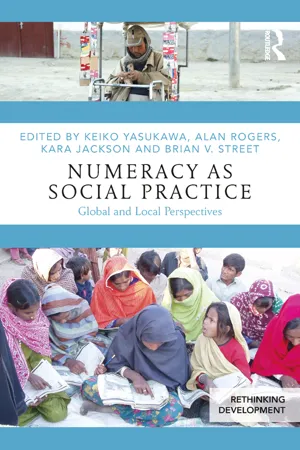
Numeracy as Social Practice
Global and Local Perspectives
- 260 pages
- English
- ePUB (mobile friendly)
- Available on iOS & Android
Numeracy as Social Practice
Global and Local Perspectives
About This Book
Learning takes place both inside and outside of the classroom, embedded in local practices, traditions and interactions. But whereas the importance of social practice is increasingly recognised in literacy education, Numeracy as Social Practice: Global and Local Perspectives is the first book to fully explore these principles in the context of numeracy. The book brings together a wide range of accounts and studies from around the world to build a picture of the challenges and benefits of seeing numeracy as social practice ? that is, as mathematical activities embedded in the social, cultural, historical and political contexts in which these activities take place.
Drawing on workplace, community and classroom contexts, Numeracy as Social Practice shows how everyday numeracy practices can be used in formal and non-formal maths teaching and how, in turn, classroom teaching can help to validate and strengthen local numeracy practices. At a time when an increasingly transnational approach is taken to education policy making, this book will appeal to development practitioners and researchers, and adult education, mathematics and numeracy teachers, researchers and policy makers around the world.
Frequently asked questions
Information
PART I
Using case studies to expose the significance of what ‘surrounds’ mathematics in numeracy practices
2
ESTIMATION BY KIWIFRUIT ORCHARD MANAGERS AND URBAN REFUSE/RECYCLING OPERATORS WITHIN THEIR SITUATED HORTICULTURAL OR CIVIC WORKPLACE PRACTICES
Introduction
Estimation
The workplaces and their participants
Kiwifruit orchard managers
Recycling and refuse operators
Table of contents
- Cover
- Half Title
- Title Page
- Copyright Page
- Dedication
- Table of Contents
- List of illustrations
- List of contributors
- Foreword
- Introduction
- Part I Using case studies to expose the significance of what ‘surrounds’ mathematics in numeracy practices
- Part II Mathematics education and everyday numeracies: theoretical resources for analysis
- Part III Numeracy and power: facilitating learning of numeracy as social practice
- Conclusion
- Index